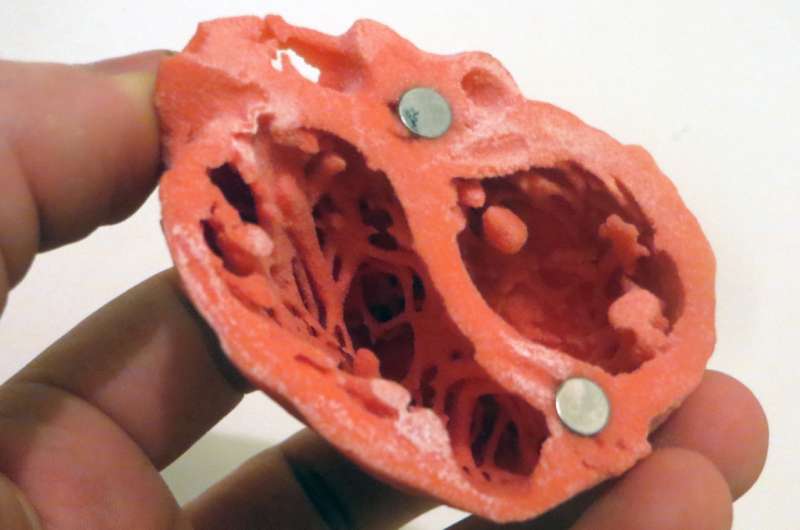Cutting-edge, whole-heart imaging provides new details on heart defects

A cutting-edge technique that allows scientists to zoom into tiny details in a 3-D image of a whole animal heart may lead to new insights on congenital heart disease.
Surgery and other interventions can help repair structural heart defects in many of the 1% of infants born with congenital heart disease. But 10-25% of these children still do not survive their first year and 44% do not survive to age 18. The new technique, originally described in a paper posted on bioRxiv and now published in eLife, reveals defects in cells and the components within them found in hearts affected by congenital heart disease. This may lead to treatments to correct these defects and further improve survival.
When pumping blood, the chambers of the heart fill up and then contract to push the blood back out into circulation. To efficiently contract, the heart cells and tiny muscle fibers inside them must be precisely organized.
"When the heart is diseased or has defects, this organization can be lost or partially lost, and the heart may no longer pump blood efficiently, leading to complications and even death," explains lead author Graham Rykiel, MS, a biomedical engineer who conducted the study as a graduate student in a research team led by senior author Sandra Rugonyi at Oregon Health & Science University (OHSU), Portland, Oregon, US.
By combining two imaging techniques, 3-D microcomputed tomography and 3-D scanning electron microscopy, the OHSU team was able to create high-resolution, 3-D images of the whole heart of a chicken embryo, and zoom in to study the organization within the heart cells. They then used this tool to examine the differences in cells and the structures within them between a healthy, normal developing chicken heart and one with a defect called tetralogy of Fallot, a relatively common form of congenital heart disease in humans. This revealed structural differences between cellular components within the healthy chicken heart and the heart with the defect.
"Our imaging technology will allow us to study exactly what happens within the heart and its cells when the heart has a defect or is diseased," Rykiel says. "This knowledge will give us clues to design better treatments for patients with heart defects and other anomalies."
The technique will be useful for studying normal heart development in chickens and other animals, and how factors such as drugs or environmental differences might influence congenital heart disease—a focus of Rugonyi's group for over 15 years. This in turn may help explain how tiny structural differences in the heart cells can cause heart problems or heart failure in people with congenital heart disease even after a successful surgery.
"By using our imaging technology on chicks with heart defects, we can start to understand how hearts from human babies with similar defects differ from normal hearts and what needs to be done beyond surgery to repair them and avoid their failure," concludes senior author Sandra Rugonyi, Ph.D., Professor of Biomedical Engineering at OHSU.
More information: Graham Rykiel et al, Multiscale cardiac imaging spanning the whole heart and its internal cellular architecture in a small animal model, eLife (2020). DOI: 10.7554/eLife.58138



















